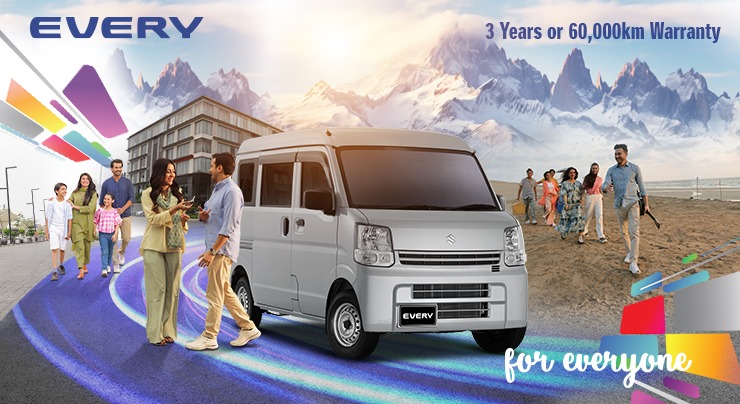
The automotive sector in Pakistan, with a population exceeding 250 million, offers an undeniably attractive target market. Yet, despite this potential, the local car market remains limited in choice and high in price. Recently, Suzuki introduced two variants of the Suzuki Every, positioned as a potential alternative to the iconic Suzuki Bolan. While this release generated interest, consumer reactions have been mixed, largely due to high inflation and the vehicle’s hefty price tag. The Suzuki Every might bring some added features and cargo space, yet it doesn’t entirely meet consumer expectations, especially when compared to its Japanese Domestic Market (JDM) counterparts. This article takes a closer look at the broader issues surrounding Pakistan’s automotive industry and the challenges faced by consumers in search of quality and affordability.
Pakistan’s automotive sector, unlike its global counterparts, is still limited by a monopoly of a few key players who dominate the market. As a result, car manufacturers offer a very narrow range of options, with consumers left with little to no alternatives in many price brackets. For instance, Suzuki Every is being marketed as a leading product, yet the reality is that it has few true competitors, leaving buyers constrained by lack of choice. The focus seems to be more on revenue generation through sales and stock share values rather than on improving product quality and addressing consumer demands.
While Suzuki Every does bring cargo space and utility features, it falls short in quality compared to the Japanese variant, which offers superior features and materials. This disparity has left consumers questioning whether they’re truly getting value for money. High inflation has further complicated matters, making the already steep price tag even less appealing. This issue is further compounded by the fact that basic parts, like spark plugs, are still imported, as local parts manufacturing remains significantly underdeveloped.
The dependence on imported parts is symptomatic of a larger issue: the lack of part localization in Pakistan’s automotive industry. While some assembly occurs locally, the majority of key components are brought in from abroad, rendering Pakistan’s automotive manufacturers more akin to hybrid car assemblers than actual producers. This reliance on imported parts raises costs and affects the overall sustainability of the sector. Neighboring countries like India have localized large portions of their automotive supply chains, allowing for cost efficiency and quality control, which are reflected in their competitive pricing and diverse product offerings.
Under the Auto Policy, the Automotive Industry Development Committee (AIDEC) and the Engineering Development Board ostensibly aim to protect and promote the local automotive sector. However, in practice, this system appears more focused on safeguarding investors than on fostering true industry growth. Rather than incentivizing localization, the policies seem designed to ensure profits for the few manufacturers who dominate the market. This protectionism, while beneficial to investors, results in an environment where product innovation and quality often take a backseat.
Pakistan’s car buyers face rising fuel costs and heavy taxation, which add a considerable burden to the end consumer. Yet, despite these pressures, there is little motivation within the industry to improve standards or offer better value. In the current market, consumers pay premium prices for vehicles that do not meet international standards, and little is being done to address these issues.
When comparing Pakistan’s automotive production rates to neighboring countries like India, the disparity is striking. While Pakistan produces a limited number of vehicles each month, India achieves similar numbers daily, benefiting from robust policies that encourage competition, innovation, and localization. Pakistan’s lag in vehicle production and diversification is not only an embarrassment but also a clear sign of policy failure. In a region with vast potential, Pakistan has fallen behind due to a lack of foresight and strategic planning in the industry.
Suzuki may promote the Every as a groundbreaking addition to its lineup, but the reality is that the lack of options in the same price bracket makes it the only viable choice for many consumers. Without competition, there is little pressure on manufacturers to improve quality, innovate, or make prices more attractive. This lack of choice is yet another example of the constrained environment created by monopolistic practices within Pakistan’s auto industry.
To foster a thriving automotive industry, Pakistan must adopt policies that encourage competition, incentivize localization, and support innovation. Breaking away from monopolistic practices and focusing on sustainable industry growth could bring significant benefits, not only for consumers but also for the economy as a whole. It is essential that policymakers move beyond protectionism and instead prioritize the long-term development of the industry, ensuring that consumers receive quality vehicles at competitive prices.
The launch of the Suzuki Every may serve as a temporary substitute for the Suzuki Bolan, but the challenges it highlights within Pakistan’s automotive sector are far-reaching. With a growing consumer base, the demand for quality vehicles is apparent, yet Pakistan’s policies and market dynamics continue to limit options and elevate costs. For a nation with vast potential, the automotive industry’s stagnation is a missed opportunity. Real reform, aimed at fostering competition and driving localization, could transform Pakistan’s automotive landscape and provide consumers with the quality and affordability they deserve.

